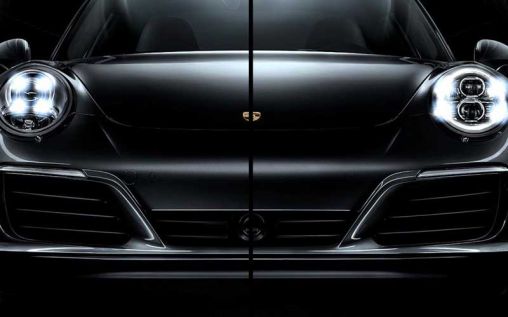Differences in HID and LED Headlights Technology
Posted by admin at 22 August 2019, at 15 : 04 PM

As the automotive industry has making progress, the design of headlights follows it. After decades of the sovereign rule of halogen bulbs, new technologies appear day by day, and new inventions appear. And it seems this progress is unstoppable.
Information about the present and future of technologies used in car headlights find on the following source:
In the early 1990s, car brands came up with xenon or HID (High-intensity discharge) lighting. Since the very beginning, it was a matter of prestige because these headlights were not offered as standard car equipment. Regardless of the model, these attractive and bright lights made each vehicle special.
Then another forward lightning option came up in the ’00s – LEDs. The technology of light-emitting diodes is widely accepted, but it seems that fans of xenon headlights do not easily fall under the influence of modern trends. Both LED and HID lights have their supporters, who are looking for efficiency, and above all for aesthetics.
The Working Principle of HID and LED
When you look at HID headlamps, you will notice that they remind you of neon signs. That’s because neon and xenon lights have a similar mode of operation, and are a great, but more expensive, alternative to halogen bulbs.
This type of headlights uses a quartz transparent housing, electrodes, and a gas mixture where xenon dominates. These parts create a mechanism that stimulates the high voltage of the electric current. It causes the xenon headlights to shine brighter than the LED bulbs. This light provides significantly better visibility, especially at low-light or poor weather conditions.
On the other hand, the principle of operation of LEDs is a bit more complicated. The process of creating light in small diodes is called luminescence.
In short, negative electrons moving and falling into the positive ‘holes’ at a lower level creates the light in the LED headlights. This combination released the energy several thousand times per minute. It is the reason for the bright light emitted by the tiny diodes. However, in terms of brightness, a slight advantage is on the HID headlamp side.
Economic Comparison
The newer the technology, the more expensive its implementation is. It evolves and changes, and so do prices. As for HID and LED headlights, they still have a reasonably high price tag. The same goes for when you implement them afterward, or they are parts of your car’s equipment.
The cost of making and installing both HID and LED headlights are high, but as LED is newer than HID, it’s a bit expensive. It may be a higher investment than xenon lights, but everything else after the installation makes a difference in price.
It primarily refers to the bulb lifetime. Although slightly more efficient than LEDs, xenon lights break down very quickly, unlike long-lasting diodes. Even if you use the cheapest HID bulbs, over the years, it can be a significant expense. It is this need to change the lamps more often makes LED technology being more profitable for car owners.
Safety Issue
The HID headlamp system is complex, and any malfunction on it can change the quality of the lighting until the xenon bulbs finally burn down. LEDs are not interconnected. Even when one breaks down, the others work with no problems. It makes replacing them much easier and faster for changing and maintenance of the headlight system.
LED technology is a bit more advanced in terms of lighting period. After turning on forward lightening or changing the beam, xenon lights usually takes a few seconds. That can sometimes lead to risky situations. The diodes light up instantly, making them a safer choice for people who frequently drive at night.
In the last decade, almost all auto parts, including headlights, have undergone tremendous changes. With the advancement of automotive technology, it was only a matter of time before the lights began to change and improve. Replacing individual components lead to significant innovations. HID and LED headlights are attractive, but their use usually depends on the car owner’s preferences. Both technologies provide a sound basis for future inventions in the field of the forward car lighting.

